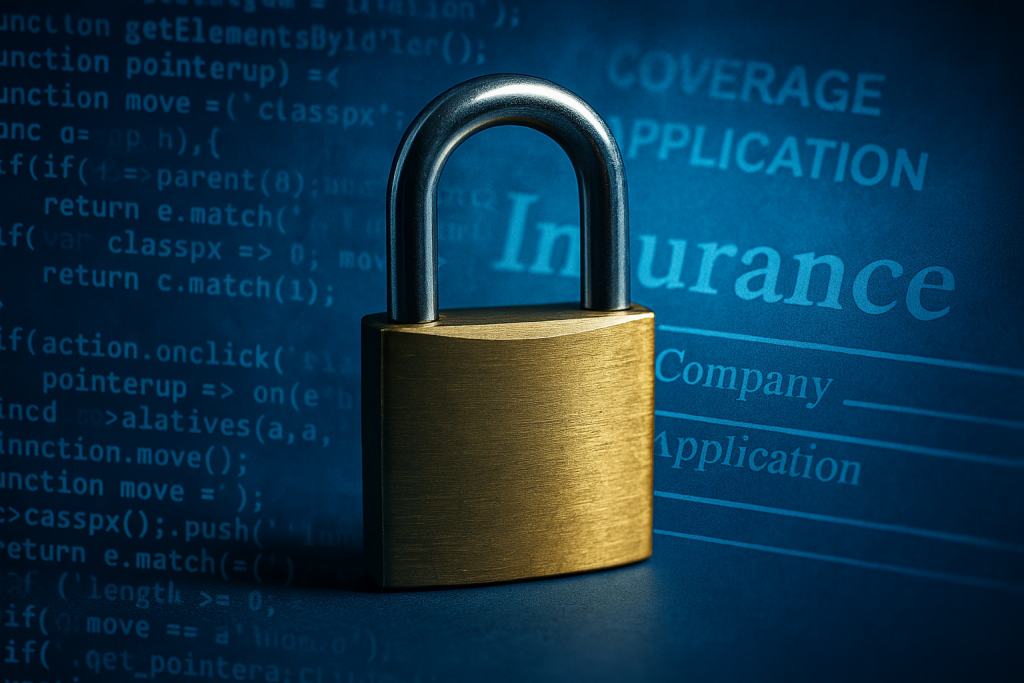Here’s a brutal truth: most Canadian businesses treat cyber insurance like a get-out-of-jail-free card. A breach happens, data leaks, operations halt — but hey, at least you’re covered, right?
Wrong.
Time after time, we’ve watched businesses bet their survival on policies they never read. And when the claims get denied, it’s not just a financial mess—it’s existential.
At 010grp, we work with companies before the breach because the damage is already done by the time you fill out an insurance form. In this article, we’ll show you precisely what cyber insurance doesn’t cover… and what you need to do about it.
What Cyber Insurance Covers (and What It Doesn’t)
Cyber insurance is often marketed as a safety net; a fallback plan if things go wrong. But let’s examine reality.
Typically Covered:
-
Legal fees from data breaches
-
Notification costs
-
Some business interruption
-
Regulatory fines (in some cases)
Common Exclusions:
-
Lack of MFA (multi-factor authentication)
-
Use of outdated or unpatched systems
-
Social engineering attacks (like phishing)
-
Vendor breaches
-
Delayed breach reporting
-
Lack of incident response documentation
Here’s the kicker: if you didn’t follow best practices, your claim could be denied. Many policies include strict “reasonable security” clauses, and what counts as “reasonable” keeps evolving.
Real Canadian Examples: Denied Claims and Disaster
Example 1: The Healthcare Hack
In 2023, a mid-sized Ontario health services provider was hit by ransomware. They assumed their policy would cover the damage. However, the insurer denied the claim because the company failed to apply a critical security patch, lagging months earlier.
Example 2: The Phishing Incident
A Vancouver-based architecture firm suffered a $150,000 loss after a fake invoice tricked a staff member. The insurer refused coverage, citing a lack of employee cybersecurity training and no documented phishing simulations.
These aren’t outliers. They’re warnings.
Cyber Insurance Is a Financial Tool, Not a Cyber Strategy
Think of cyber insurance like a seatbelt. It can lessen the damage, but it won’t stop the crash.
Insurance companies aren’t in the business of preventing breaches. They’re in the business of limiting their liability. That’s why they’re increasingly requiring proof of:
-
Managed Detection and Response (MDR)
-
Endpoint Detection and Response (EDR)
-
Security Awareness Training
-
Incident Response Plans
-
Third-Party Risk Assessments
If you don’t have those in place, you’re not just unprotected; you’re potentially uninsurable.
The Real Safety Net: Proactive Cyber Defence
At 010grp, we don’t just help you pass the insurer’s checklist. We build refactored fences.
Here’s what that looks like:
Gap Analysis
We assess your infrastructure against modern threat models and your insurer’s expectations.
Endpoint Protection (EDR/MDR)
Real-time detection, threat hunting, and response, not just signature-based antivirus that’s out of date.
Phishing Simulations & Awareness Training
We test your people, train them hard, and track who’s still vulnerable, because attackers will.
Incident Response Playbooks
We help you build real-world plans: who does what, when, and how fast. That’s the difference between recovery and ruin.
Vendor & Third-Party Risk Management
You’re only as secure as your weakest partner. We audit your external risk, too.
Bottom Line: Cyber Insurance Is Your Backup, Not Your Plan
Relying on insurance to fix your cybersecurity mess is like relying on a fire extinguisher in a house without smoke detectors. It’s reactive, risky, and rarely ends well.
Please don’t wait until your claim is denied to realize you needed a partner like us.
We work with Canadian businesses across industries, SMBs, healthcare, fintech, law, and education, to build fundamental cybersecurity. That means lower risk, better insurance premiums, and a fighting chance when (not if) the breach happens.
Ready to Take Cybersecurity Seriously?
Let’s review your cyber readiness, before your insurer does.
Contact us today for a free consultation

